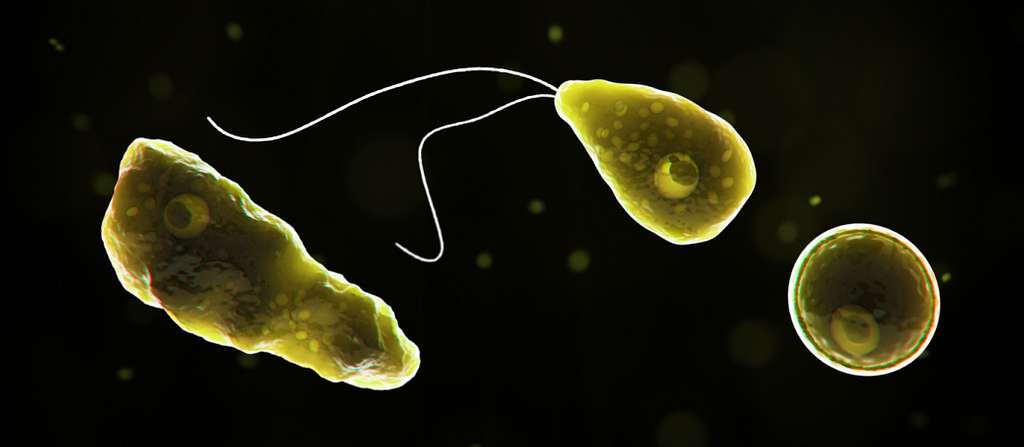Imagine enjoying a warm summer day, swimming in a freshwater lake or under chlorinated swimming pool, blissfully unaware that lurking in the water is a microscopic organism with the potential to cause a devastating brain infection. This organism, known as the brain eating amoeba or Naegleria fowleri, has been making headlines due to a recent surge in cases in India. Understanding this deadly amoeba, how it infects humans, and how to prevent it is crucial for anyone who enjoys water activities.
What is a Brain Eating Amoeba?
The brain-eating amoeba, scientifically known as Naegleria fowleri, is a single-celled organism that thrives in warm freshwater environments. This amoeba is notorious for causing a rare and often fatal brain infection called primary amoebic meningoencephalitis (PAM).
Where is Naegleria fowleri Found?
Naegleria fowleri is typically found in warm freshwater bodies such as lakes, rivers, hot springs, and even poorly maintained swimming pools. It prefers temperatures above 30°C (86°F) and can be found globally, with higher prevalence in regions with warm climates.
Recent Surge in Cases in India
Kerala has seen an alarming increase in Naegleria fowleri infections in recent times. This uptick in cases is concerning, given the amoeba’s high fatality rate and the rapid progression of the disease.
The surge in cases can be attributed to several factors, including rising temperatures due to climate change, which create ideal conditions for the amoeba to thrive. Additionally, changes in water management practices and increased recreational water activities may contribute to the higher incidence of infections.
Causes of Infection
Naegleria fowleri typically enters the human body through the nose when individuals swim or dive in contaminated warm freshwater. Once inside the nasal passages, the amoeba travels along the olfactory nerve to the brain, where it causes inflammation and destruction of brain tissue.
Activities such as swimming, diving, and engaging in water sports in warm freshwater bodies or even under chlorinated swimming pools significantly increase the risk of infection. Using untreated or poorly treated water for nasal rinses or sinus flushes can also pose a risk.
Life Cycle of Naegleria fowleri
Naegleria fowleri has three stages in its life cycle: cyst, trophozoite, and flagellate. The trophozoite stage is the infective form, which actively feeds and multiplies in warm water.
During swimming or diving, the trophozoites enter the nasal passages, travel along the olfactory nerve, and invade the brain, causing PAM.
Symptoms of Infection
Early Symptoms
- Severe headache
- Fever
- Nausea
- Vomiting
Advanced Symptoms
- Stiff neck
- Confusion
- Lack of attention to surroundings and people
- Loss of balance
- Seizures
- Hallucinations
Symptoms usually appear within 1 to 9 days after exposure and progress rapidly. Without treatment, the infection is almost always fatal within about five days.
Diagnosis
Diagnosing Naegleria fowleri infection involves detecting the amoeba in cerebrospinal fluid (CSF), biopsy, or tissue specimens. Advanced imaging techniques like MRI and CT scans can also help in diagnosis.
Early detection is critical as it increases the chances of successful treatment. Rapid progression of the disease means that delays in diagnosis can be fatal.
Prevention Measures
1. Avoiding Warm Freshwater
Limit swimming or diving in warm freshwater bodies, especially during high-temperature periods.
2. Using Nose Clips
When swimming in freshwater, use nose clips to prevent water from entering the nasal passages.
3. Avoiding Stirring Sediment
Refrain from stirring up sediment in shallow, warm freshwater areas where the amoeba may reside.
4. Ensuring Safe Water Practices
For those using untreated or poorly treated water for household purposes, avoid nasal exposure by using boiled or distilled water for nasal rinses and sinus flushes.
Treatment Options
Prompt and aggressive treatment is crucial. Medical treatment typically involves a combination of antimicrobial drugs. Medications such as amphotericin B, rifampin, fluconazole, miltefosine, and azithromycin are used to treat the infection. Intensive supportive care in a hospital setting is necessary to manage symptoms and complications.
Challenges in Treatment
The rarity of the infection and its rapid progression make it challenging to diagnose in time. The disease progresses swiftly, often leading to fatal outcomes within days, emphasizing the need for immediate medical intervention upon symptom onset.
Research and Developments
Ongoing research aims to better understand Naegleria fowleri and develop more effective treatments and preventive measures. Future prospects include improved diagnostic methods and potential vaccines to protect against the infection.
Public Awareness and Education
Raising awareness about Naegleria fowleri is crucial for preventing infections and promoting early diagnosis. Educational initiatives can help inform the public about the risks and preventive measures associated with the brain-eating amoeba.
Understanding the dangers of Naegleria fowleri and taking preventive measures can help reduce the risk of infection. Awareness and education about this rare but deadly amoeba are essential, especially during periods of high temperatures when the risk is elevated. If symptoms arise after potential exposure, seeking immediate medical help is critical for increasing the chances of survival.
FAQs
- What are the early symptoms of a Naegleria fowleri infection? Early symptoms include severe headache, fever, nausea, and vomiting.
- Can Naegleria fowleri infections be treated? Yes, but early diagnosis and prompt medical treatment are crucial. Treatments involve a combination of antimicrobial drugs and supportive care.
Also Read: Yoga Through the Ages: Bridging Body and Mind | Yoga Benefits
Photo Credits- [Click Here]
